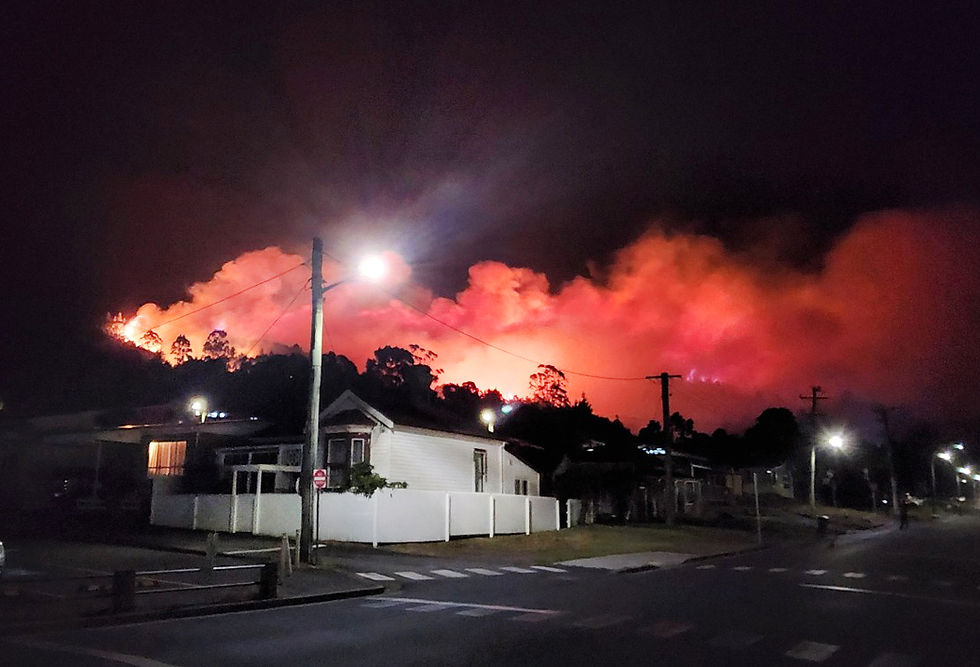NAB caught out in data lie over branch closures
- Dale Webster

- Jul 3, 2023
- 4 min read
Updated: Aug 13, 2023

THE National Australia Bank (NAB) has been pulling a swifty on customers that have lost branches since September last year, using incomplete visitation data to justify the decisions.
NAB has been blaming a drop in foot traffic for the closures in documents now required under revisions to the Australian Banking Association’s branch closure protocol to explain why a decision to close a branch has been made.
“Fewer customers are coming into branches to do their banking and foot traffic has lessened,” NAB has given as the reason for the closures of 59 branches, providing branch visitation figures for each branch for the previous year.
A NAB spokesman revealed this week however, that the figures are only for over-the-counter transactions and business bag deposits, meaning customers coming into branches for general business are not captured in the foot traffic count.
General business is anything that does not involve a transaction, such as customers who have had to come into a branch to sort out IT issues, provide proof-of-identity documents, remove or add names to accounts, appointments for term deposit changes, to speak to staff about loans, meetings with managers or any other activity that is not a deposit or withdrawal.
The deception was revealed when the use of the phrase “over the counter interactions” on NAB’s West Lakes “branch closure fact sheet” was questioned, with information sought on what activities were being counted as foot traffic.
It is the only one of the 59 fact sheets that has carried this clarification.
“We don’t use the term ‘over the counter interaction’ but personal banking/business banking transactions referenced in the fact sheets comes from over the counter transactions in the branch and Express Business Deposit bags,” the spokesman said.
After being sent an excerpt from the West Lakes fact sheet showing the bank had used the phrase in reference to visitation, the spokesman said, “the methodology would have been the same for the use of this phrase on the West Lakes fact sheet” leaving no doubt that the figures provided on all fact sheets only represent a partial picture of customer attendance at branches.
West Lakes visitation

How the information is displayed on all other fact sheets

The disclosure will be embarrassing to Australian Banking Association chief executive Anna Bligh, who was doing the PR rounds last week promoting the changes to the Banking Code of Practice’s Branch Closure Protocol, which was first published more than 20 years ago as the result of a recommendation of the Hawker inquiry into regional bank closures in 1999.
The changes stem from recommendations in the 2022 Regional Banking Taskforce final report, an exercise dominated by the banking industry that gave the green-light to continued branch closures and necessitated the launch of a Senate inquiry into the issue that is now underway.
“Banks will have to prepare and publish a document that explains why they’ve closed that branch, including some of the data about the usage of the branch,” Ms Bligh told the ABC.
NAB, which held a seat on the taskforce and had a hand in the recommendations, began creating these “branch closure impact assessments”, which it calls “branch closure fact sheets” nearly two months before the taskforce report was released in September last year.
If data cited for visitation by NAB is not a true picture of customer attendance at branches, it raises serious questions about whether incomplete visitation figures are also being fed into statistics quoted by the ABA on declining use of bank branches.
Ms Bligh and NAB have been caught out before releasing incomplete information on branch usage, claiming in media interviews and government testimony that visitation at Maffra in Victoria had significantly reduced in the previous year but failing to disclose opening hours had been slashed and the branch hadn’t even allowed customers through the doors for the three hours a day it was supposed to for at least six months due to staffing issues.
Maffa is one of the 59 locations that has had branch visitation misrepresented in a fact sheet that was tabled as evidence at the first Senate hearing of the Regional Bank Closure Inquiry at Sale in March by NAB’s Executive General Manager, Retail, Krissie Jones.
Providing a document that contains information presented in such a way as to mislead the reader into assuming a figure represents total foot traffic at a branch when it is only a partial sample may well be considered another instance of contempt of the Senate.
Watch NAB executives admit under questioning in the federal House of Representatives economics committee hearing on July 12 2023 that they only count transactions and have no idea how many customers come through their doors to do other essential business.
Locations that have had visitation data misrepresented
NSW
Barraba
Bombala
Camden
Cooma
Forbes
Gilgandra
Gosford
Gundagai
Holbrook
Lake Cargelligo
Narooma
Sydney (Pitt Street & Hunter St)
Queanbeyan
Sussex Inlet
Warners Bay
Warren
Windsor
Wellington
Laurieton
Murwillumbah
Baulkham Hills
Maroubra
Revesby
Temora
Queensland
Biggenden
Boonah
Cleveland
Clifton
Dysart
Kippa Ring
Laidley
Longreach
Springwood
Tin Can Bay
South Australia
Roxby Downs
Strathalbyn
West Lakes
Tasmania
Kings Meadows
Victoria
Alexandra
Belmont
Clayton
Inverloch
Jeparit
Kilmore
Kyneton
Maffra
Moorabbin
Niddrie
Melbourne (Queen Victoria)
Ferntree Gully
Port Melbourne
Tatura
Western Australia
Bunbury (131 Victoria St)
Denmark
Dunsborough
Floreat
Maddington
Kalbarri
ACT
Manuka
Stories on The Regional’s website are free to read and always will be.
If you enjoyed this article you can show your support by joining our mailing list (either by filling out the form below or sending us a message).
We'd also get very excited if you followed us on Twitter and Mastodon




Comments